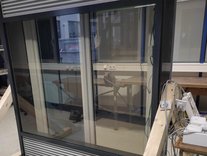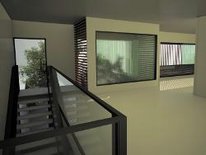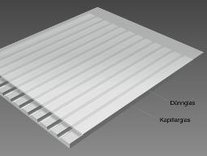Main research areas
The Chair focuses on the analysis, dimensioning and structural design of steel, hybrid and timber structures and concentrates on analytical, numerical and experimental research. This includes the development and application of computer-oriented methods and simulations of load-bearing structures under complex loads. The following research focuses are pursued:
Numerical simulation methods, non-linear load-bearing behavior and stability of steel structures
Numerical, computer-oriented methods are being further developed and new insights gained that enable a more precise and thus safer and more economical determination of the load-bearing behavior of steel structures and components. Computer-oriented approaches as well as design that have not yet been pursued are being examined for their suitability. In addition calculation methods based on numerical, geometrically and physically non-linear methods are being further developed. Current research topics in this context deal with:
- shear lag effect considerations in beam theory,
- stability calculations according to GMNIA,
- numerical approaches for capturing material non-linearity in structural models,
- the load-bearing behavior of additively manufactured steel components and
- the load-bearing capacity of welded plates (plate buckling).
Impressions from topic-related research works:
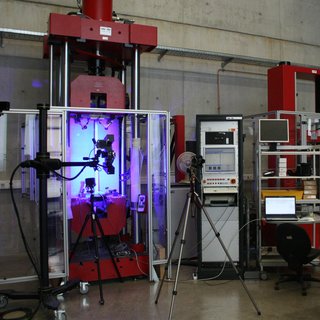
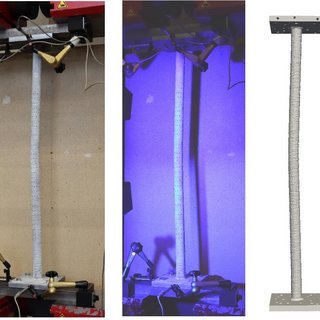
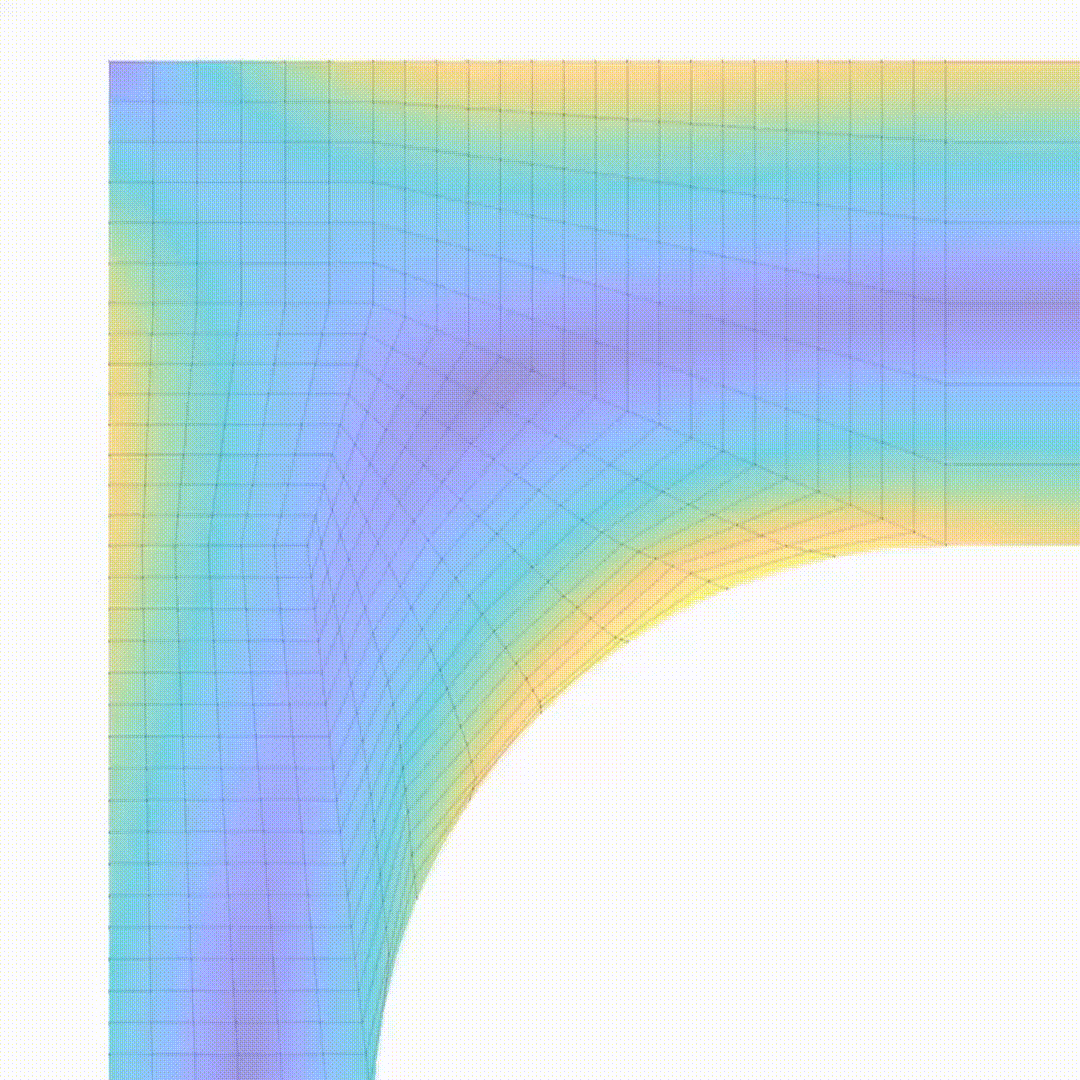

Ibáñez, S.; Kraus, M. (2024) Numerical method for the primary torsional capacity of arbitrary steel cross sections considering nonlinear plastic behaviour. In: Results in Engineering 18, 102172. (doi.org/10.1016/j.rineng.2024.102172)
Kindmann, R.; Kraus, M.; Seeßelberg, C.; Tworek, J. (2024) Neue Methoden für Nachweise zur Tragfähigkeit und zum Biegedrillknicken von Kranbahnträgern. In: Stahlbau 93, H. 4, S. 212-237. (doi.org/10.1002/stab.202300094)
Moscoso, C.; Hernandez, L.; Kraus, M. (2024) Digitale Prozesskette zur Analyse des Tragverhaltens und Reproduktion einer historischen gusseisernen Stütze, DASt-Kolloquium 2024, S. 130-134.
Ibáñez, S.; Kraus, M. (2023) Algorithm for the Plastic Analysis of Arbitrary Steel Cross Sections Based on Finite Element Formulations. In: Proceedings of the 10th European Conference on Steel and Composite Structures (EUROSTEEL 2023, Amsterdam), ce/papers 6, No. 3-4, pp. 1623-1628. (doi.org/10.1002/cepa.2421)
Moscoso, C.; Kraus, M. (2023) On the Capacity of Beams with U Cross Section Subjected to Bending and Scheduled Torsion. In: Proceedings of the 10th European Conference on Steel and Composite Structures (EUROSTEEL 2023, Amsterdam), ce/papers 6, No. 3-4, pp. 1680-1685. (doi.org/10.1002/cepa.2437)
Moscoso, C.; Kraus, M. (2022) On the verification of beams subjected to lateral torsional buckling by simplified plastic structural analysis. In: Proceedings of the International Colloquium on Stability and Ductility of Steel Structures (SDSS 2022). ce/papers 5, No. 4, pp. 914-923. (doi.org/10.1002/cepa.1835)
Fritz, H.; Kraus, M. (2022) Machine Learning Approach for Stress Analyses of Steel Members Affected by Elastic Shear Lag. In: Current Perspectives and New Directions in Mechanics, Modelling and Design of Structural Systems. Proceedings of the Eighth International Conference on Structural Engineering, Mechanics and Computation (SEMC 2022, Cape Town). CRC Press, Taylor & Francis. (doi.org/10.1201/9781003348443-156)
Ibáñez, S.; Kraus, M. (2022) Numerical Elastoplastic Analysis of Steel Cross Sections. In: Deutscher Ausschuss für Stahlbau, DASt-Kolloquium 2022, S. 77-80.
Kraus, M.; Winkler, P.; Hammer, S.; Reimann, J.; Hildebrand, J.; Bergmann, J. P. (2021) Geometric Imperfections of Additive Manufactured Members. In: Engineering Structures 252, 113596. (doi.org/10.1016/j.engstruct.2021.113596)
Ibáñez, S.; Kraus, M. (2021) A Numerical Approach for Plastic Cross-Sectional Analyses of Steel Members. In: Proceedings of the 9th European Conference on Steel and Composite Structures (EUROSTEEL 2021, Sheffield), ce/papers 4, No. 2-4, pp. 2098-2106. (doi.org/10.1002/cepa.1527)
Kraus, M.; Crisan, N.-A.; Wittor, B. (2021) Stability of Cantilever-Beams – Numerical Analysis and Analytical Calculation (LTB). In: Proceedings of the 9th European Conference on Steel and Composite Structures (EUROSTEEL 2021, Sheffield), ce/papers 4, No. 2-4, pp. 2199-2206. (doi.org/10.1002/cepa.1539)
Kindmann, R.; Kraus, M. (2020) Lohnen sich Stabilitätsnachweise nach der Fließzonentheorie? In: Festschrift zum 70. Geburtstag von Ingbert Mangerig, S. 145-151. (ISSN 1431-5122)
Mämpel, S.; Kraus, M. (2019) Influence of Structural Detailing on the Stability Behaviour of Truss Girders. In: Proceedings of the Nordic Steel Construction Conference (Nordic Steel 2019, Kopenhagen), ce/papers 3, No. 3 & 4, pp. 847-852. (doi: 10.1002/cepa.1143)
Kraus, M.; Kindmann, R. (2019) Finite-Elemente-Methoden im Stahlbau. 2. wesentlich überarb. u. erw. Auflage. Berlin: Ernst & Sohn. (ISBN 978-3-433-03149-0)
Kindmann, R.; Kraus, M. (2019) FE-Berechnungen mit Fließzonen für Tragfähigkeitsnachweise nach DIN EN 1993-1-1 – Vereinfachte Berechnungsmethode für stabilitätsgefährdete Bauteile. In: Stahlbau 88, H. 4,S. 354-362. (doi: 10.1002/stab.201900003)
Morgenthal, G.; Wang, W.; Kraus, M. (2019) Numerische Untersuchungen einer energiedissipierenden Schutzvorrichtung gegen Schiffsanprall. In: Stahlbau 88, H. 4, S. 314-323. (doi: 10.1002/stab.201900004)
Mämpel, S.; Kraus, M. (2018) Zur Ermittlung von Stabilisierungskräften verbandsausgesteifter Fachwerkbindersysteme. In: Deutscher Ausschuss für Stahlbau, DASt-Kolloquium 2018, S. 23-28. (ISBN 978-3-941687-27-1)
Kraus, M.; Mämpel, S. (2017) Zur computerorientierten Berechnung schubbeeinflusster Normalspannungen in Stäben. In: Stahlbau 86, H. 11, S. 951-960. (doi: 10.1002/stab.201710543)
Kraus, M.; Mämpel, S.; Crisan, A. (2017) Influence of Rails on the Stability of Crane Runway Girders. In: Proceedings of the 8th European Conference on Steel and Composite Structures (EUROSTEEL 2017). Kopenhagen: ce/papers 1, No. 2-3, pp. 1029-1038. (doi:10.1002/cepa.143)
Crisan, A.; Kraus, M.; Handabut, A. (2017) On the distortional buckling capacity of pallet rack uprights. Proceedings of the 8th European Conference on Steel and Composite Structures (EUROSTEEL 2017). Kopenhagen: ce/papers 1 (2017), No. 2-3, pp. 1627-1636. (doi:10.1002/cepa.206)
Kraus, M. (2017) Numerical Approach for Bending Stress Ascertainment in Beam Theory Considering Effects of Elastic Shear Lag. In: Engineering Structures and Technologies, Taylor & Francis, 9(1), pp. 1-8. (doi: 10.3846/2029882X.2017.1299966)
Kraus, M.; Mämpel, S. (2017) Kennwerte neuer und abgenutzter Kranschienen für die Bemessung von Kranbahnträgern. In: Stahlbau 86, H. 1, S. 36-44. (doi: 10.1002/stab.201710445)
Käsmaier, M.; Ebel, R.; Kraus, M.; Knobloch, M. (2016) Flexural Buckling Behaviour Considering Different Residual Stress Approaches. In: Proceedings of the International Colloquium on Stability and Ductility of Steel Structures (SDSS 2016). Timisoara/Romania, pp. 501-508. (ISBN 978-92-9147-133-1)
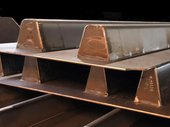
Projektart: Bundesministerium für Wirtschaft und Klimaschutz (BMWK), Forschungsvereinigung Stahlanwendung e.V. (FOSTA), AIF-IGF-Vorhaben / Förderdauer: 2022 - 2024
Weitere Informationen finden Sie hier.
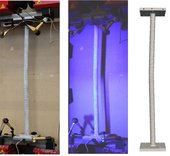
Projektart: Thüringer Ministerium für Wirtschaft, Wissenschaft und Digitale Gesellschaft (TMWWDG) – Landesprogramm ProDigital /
Förderdauer: 2020 - 2024
Weitere Informationen finden Sie hier.
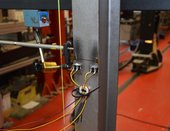
Projektart: Thüringer Ministerium für Wirtschaft, Wissenschaft und Digitale Gesellschaft (TMWWDG) / Europäische Union (EFRE) / Thüringer Aufbaubank / Förderdauer: 2017 - 2018
Weitere Informationen finden Sie hier.
Structural monitoring, service life assessment and rehabilitation of steel and composite structures
For existing structures, questions often arise with regard to load-bearing capacity and stability as well as serviceability. Due to the increasing volume of traffic and the associated ever-increasing traffic loads, existing bridge structures, for example, have to be checked and assessed in this respect. With a focus on steel and composite structures, investigations are carried out with regard to sensor monitoring, stability and fatigue as well as service life assessment. Recalculation concepts are sharpened and monitoring-supported design models are developed, which are based, for example, on Bayesian methods. In addition, probabilistic structural analyses are being further developed, taking into account instationarities in the underlying time-dependent data (e.g. in climate data).
Impressions from topic-related research works
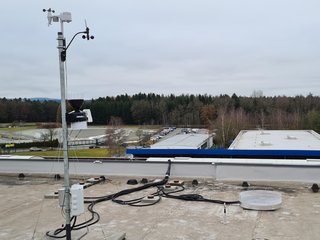
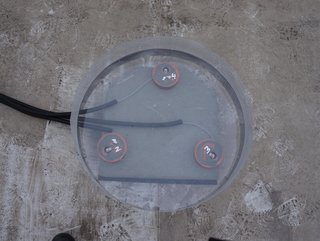
Chowdhury, S.; Arnold, R.; Kraus, M. (2023) Reassessment of Operating Engineering Steel Structures with the First Order Reliability Method and Bayesian Inference. In: Proceedings of the 10th European Conference on Steel and Composite Structures (EUROSTEEL 2023, Amsterdam), ce/papers 6, No. 3-4, pp. 2683-2688. (doi.org/10.1002/ cepa.2605)
Kraus, M.; Chowdhury, S. (2023) Sensorbasierte Identifikation der Struktursteifigkeit zur Bemessung von Stahltragwerken. In: Stahlbau 92, H. 2, S. 68-81. (doi.org/10.1002/stab.202200057)
Arnold, R.; Kraus, M. (2022) On the Nonstationary Identification of Climate-Influenced Loads for the Semi-Probabilistic Approach Using Measured and Projected Data. In: Cogent Engineering 9 (1), 2143061. (doi.org/10.1080/23311916.2022.2143061)
Kraus, M.; Chowdhury, S.; Wudtke, I. (2022) Intelligent Steel Structures – Model Updating Concepts for Innovative Design Strategies. In: ce/papers 5, No. 4. (doi.org/10.1002/cepa.1885)
Fritz, H.; Walther, C.; Kraus, M. (2022) Piezoresistive Sensor Matrix for Adaptive Structures. In: Current Perspectives and New Directions in Mechanics, Modelling and Design of Structural Systems. Proceedings of the Eighth International Conference on Structural Engineering, Mechanics and Computation (SEMC 2022, Cape Town). CRC Press, Taylor & Francis. (doi.org/10.1201/9781003348443-72)
Chowdhury, S.; Kraus, M. (2022) Design-related Reassessment of Structures Integrating Bayesian Updating of Model Safety Factors. In: Results in Engineering (doi.org/10.1016/j.rineng.2022.100560)
Fritz, H.; Walther, C.; Kraus, M. (2022) Piezoresistive Sensors for Monitoring Actions on Structures. In: Proceedings of the European Workshop on Structural Health Monitoring (EWSHM 2022, Palermo), Springer, No. 2, pp. 123-133. (doi: 10.1007/978-3-031-07258-1_14)
Arnold, R.; Kraus, M. (2022) Instationäre Berücksichtigung klimabeeinflusster Lasten für die semi-probabilistische Bemessung von Stahlkonstruktionen. In: Deutscher Ausschuss für Stahlbau, DASt-Kolloquium 2022, S. 21-24.
Wang, W.; Morgenthal, G.; Kraus, M. (2020) Numerical evaluation of a novel crashworthy device for pier protection from barge impact. In: Engineering Structures 212, 110535. (doi: 10.1016/j.engstruct.2020.110535)
Kraus, M.; Wittor, B. (2019) Digital Roads – New Potentials for Assessing the Structural Behaviour of Steel and Composite Bridges. In: Proceedings of the Nordic Steel Construction Conference (Nordic Steel 2019, Kopenhagen), ce/papers 3, No. 3 & 4, pp. 139-144. (doi: 10.1002/cepa.1040)
Wudtke, I.; Kraus, M. (2019) Perspectives of Experimentally Based Design Strategies in Steel Engineering. In: Advances in Engineering Materials, Structures and Systems: Innovations, Mechanics and Applications. Proceedings of Seventh International Conference on Structural Engineering, Mechanics and Computation (SEMC 2019), Cape Town. CRC Press/Balkema, Taylor & Francis. (ISBN 978-1-138-38696-9, 978-0-429-42650-6)
Göbel, L.; Mucha, F.; Kavrakov, I.; Abrahamczyk, L.; Kraus, M. (2018) Einfluss realer Materialeigenschaften auf numerische Modellvorhersagen: Fallstudie Betonmast. In: Bautechnik 95, H. 2, S. 111-121. (doi: 10.1002/bate.201600091)
Göbel, L.; Mucha, F.; Jaouadi, Z.; Kavrakov, I.; Abrahamczyk, L.; Legatiuk, D.; Kraus, M.; Smarsly, K. (2016) Monitoring the Structural Response of Reinforced Concrete Poles Along High-Speed Railway Tracks. In: Proceedings of the International RILEM Conference on Materials, Systems and Structures in Civil Engineering (MSSCE 2016), Lyngby. (ISBN: 9788778774552)
Kraus, M.; Vette, J. (2014) On the Recalculation of Steel and Composite Bridges. In: Proceedings of the 7th European Conference on Steel and Composite Structures (EUROSTEEL 2014), Neapel. (ISBN 978-92-9147-121-8)

Projektart: Deutsche Forschungsgemeinschaft (DFG), Sachbeihilfe / Förderdauer: 2022 - 2026
Weitere Informationen finden Sie hier.
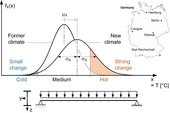
Projektart: Thüringer Ministerium für Wirtschaft, Wissenschaft und Digitale Gesellschaft (TMWWDG) / Europäische Union (ESF) / Thüringer Aufbaubank / Förderdauer: 2020 - 2022
Weitere Informationen finden Sie hier.
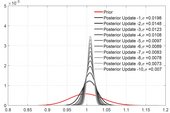
Projektart: Deutsche Forschungsgemeinschaft (DFG), Sachbeihilfe /
Förderdauer: 2018 - 2022
Weitere Informationen finden Sie hier.
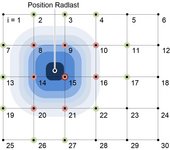
Projektart: Thüringer Ministerium für Wirtschaft, Wissenschaft und Digitale Gesellschaft (TMWWDG) / Europäische Union (ESF) / Thüringer Aufbaubank / Förderdauer: 2018 - 2020
Weitere Informationen finden Sie hier.
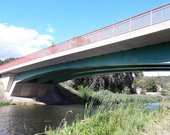
Projektart: BAST Forschungsauftrag /
Förderdauer: 2018 - 2019
Weitere Informationen finden Sie hier.

Projektart: Thüringer Ministerium für Wirtschaft, Wissenschaft und Digitale Gesellschaft (TMWWDG) / Europäische Union (EFRE) / Thüringer Aufbaubank / Förderdauer: 2017 - 2018
Weitere Informationen finden Sie hier.
Adhesive bonding in glass and metal construction
Durch die Transparenz hat der Einsatz von Glas in Gebäudefassaden einen besonderen Stellenwert eingenommen. Gleichzeitig werden jedoch hohe Ansprüche am die klimatische Regelung von Gebäuden/Innenräumen gestellt. Im Zusammenhang mit dem Klimaschutz liegt darüber hinaus ein besonderer Fokus in der Reduzierung des Nutzenenergiebedarfs von Gebäuden, die sich durch innovative Lösungssystemen und entsprechende Forschungsansätze vorantreiben lässt.
Impressionen aus themenbezogenen Forschungsarbeiten
In addition to the well-known joining techniques in building construction such as bolting and welding, adhesive bonding is considered a new possibility for joining technology. In order to assess the durability of bonded structures, various non-destructive analysis methods are being investigated in order to draw conclusions about the load-bearing behavior and load-bearing capacity of the bonded joints, taking into account various climatic influences. The resulting findings are also used to realistically characterize the load-bearing behaviour on a numerical level.
Impressions from topic-related research works
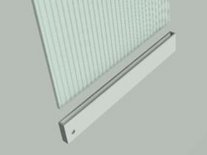
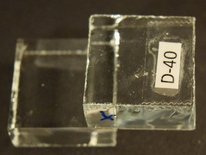
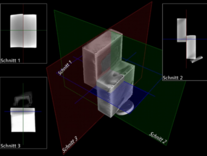
Sirtl, C.; Kraus, M. (2022) Development of an Energetic High-Efficient and Adaptive Double-Skin Facade. In: Proceedings of the 9th Conference of IBPSA Germany and Austria (BauSIM 2022, Weimar), pp. 457-462.
Kraus, M.; Klaus, M.; Wittor, B. (2021) Experimental Analyses on the Resistance of Tapped Blind Holes. In: Proceedings of the 9th European Conference on Steel and Composite Structures (EUROSTEEL 2021, Sheffield), ce/papers 4, No. 2-4, pp. 141-147. (doi.org/10.1002/cepa.1273)
Sirtl, C.; Kraus, M. (2020) Bewertung des Materialverhaltens geklebter Verbindungen im Stahl- und Glasbau. In: Deutscher Ausschuss für Stahlbau, DASt-Kolloquium 2020, S. 55-58. (ISBN 978-3-941687-31-8)
Sirtl, C.; Kraus, M. (2018) Bonding Quality of Joined Glass Components Exposed to UV and Fluidic Influences. In: Engineering Transparancy 2018, ce/papers 2, No. 5-6, pp. 399-408. (doi: 10.1002/cepa.940)
Sirtl, C.; Kraus, M.; Hadlich, C.; Osburg, A. (2018) Determination of Bonding Failures in Transparent Materials with Non-Destructive Methods – Evaluation of Climatically Stressed Glued and Laminated Glass Compounds. In: World Journal of Engineering and Technology, 6, pp. 315-331. (doi: 10.4236/wjet.2018.62020)
Kraus, M; Sirtl, C. (2018) Zum Tragverhalten klimatisch beanspruchter geklebter Stahl-Glas-Verbindungen. In: Festschrift zum 60. Geburtstag von Jörg Lange, S. 13-18. (urn:nbn:de:tuda-tuprints-74665)
Sirtl, C.; Kraus, M.; Hadlich, C.; Osburg, A.; Wondraczek, L. (2017) Zur Bewertung klimatisch beanspruchter geklebter Glasverbindungen. In: Glasbau 2017, B. Weller & S. Tasche (Hrsg.). Berlin: Ernst & Sohn und ce/papers 1 (2017), No. 1, pp. 254-275. (ISBN: 978-3-433-03171-1, und doi:10.1002/cepa.26)
Heiz, B. P. V.; Pan, Z.; Lautenschläger, G.; Sirtl, C.; Kraus, M.; Wondraczek, L. (2017) Ultrathin Fluidic Laminates for Large-Area Façade Integration and Smart Windows. In: Advanced Science, 4, 1600362, pp. 1-9. (doi: 10.1002/advs.201600362)
Wittor, B.; Kraus, M. (2016) Faserverstärkte Klebstoffe im Metallbau. In: Deutscher Ausschuss für Stahlbau, DASt-Kolloquium 2016, S. 95-99. (ISBN 978-3-941687-19-6)
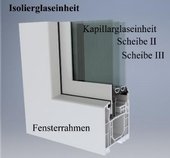
Projektart: FTI Thüringen 2021 - 2027, Ministerium für Wirtschaft, Wissenschaft und Digitale Gesellschaft Thüringen / Förderdauer: 2023 - 2025
Weitere Informationen finden Sie hier.
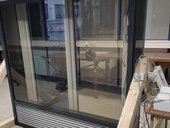
Projektart: Bundesministerium für Wirtschaft und Energie (BMWi) / AiF - Zentrales Innovationsprogramm Mittelstand (ZIM) / Förderdauer: 2019 - 2021
Weitere Informationen finden Sie hier.
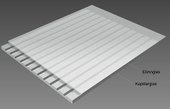
Projektart: European Commission, Horizon 2020 /
Förderdauer: 2015 - 2017
Weitere Informationen finden Sie hier.

Projektart: Thüringer Ministerium für Wirtschaft, Wissenschaft und Digitale Gesellschaft (TMWWDG) / Europäische Union (EFRE) / Thüringer Aufbaubank / Förderdauer: 2017 - 2018
Weitere Informationen finden Sie hier.
Polymer mortar adhesive bonds for timber construction
Bonding can be used in timber engineering to transfer high loads permanently and without slippage. In addition to industrial use, for example in the manufacture of laminated timber products, timber-wood joints (stock joints, universal finger joints, etc.) but also connections (glued-in steel bars or perforated steel sheets, etc.) are realized using adhesive bonding. The adhesive joint thickness is generally limited to less than 2 mm. Due to the chemical formulation of the adhesives used and/or to ensure full-surface bonded joints, curing must in many cases be carried out by applying pressure perpendicular to the bonded joint.
Adhesive bonds using mineral-filled polymer mortars based on epoxy resins are an alternative for increased tolerance compensation requirements and in cases where it is not possible to apply pressure. Following on from previous investigations at the IKI (Chair of Timber and Masonry Construction), the focus of the research area is on the investigation of hybrid material composites between wood and other materials such as concrete, metallic or fiber-reinforced materials. The fields of application for friction-locked, joint-filling adhesive bonds that are conceivable in construction practice are diverse and range from non-slip assembly joints and reinforcement solutions to superstructure structures for road bridges in timber-concrete composite construction.
Impressions from topic-related research works
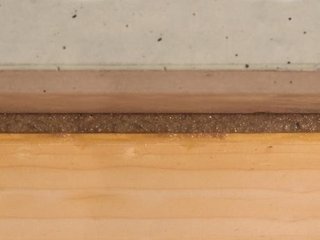
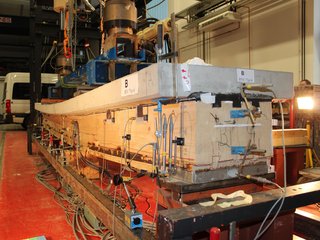
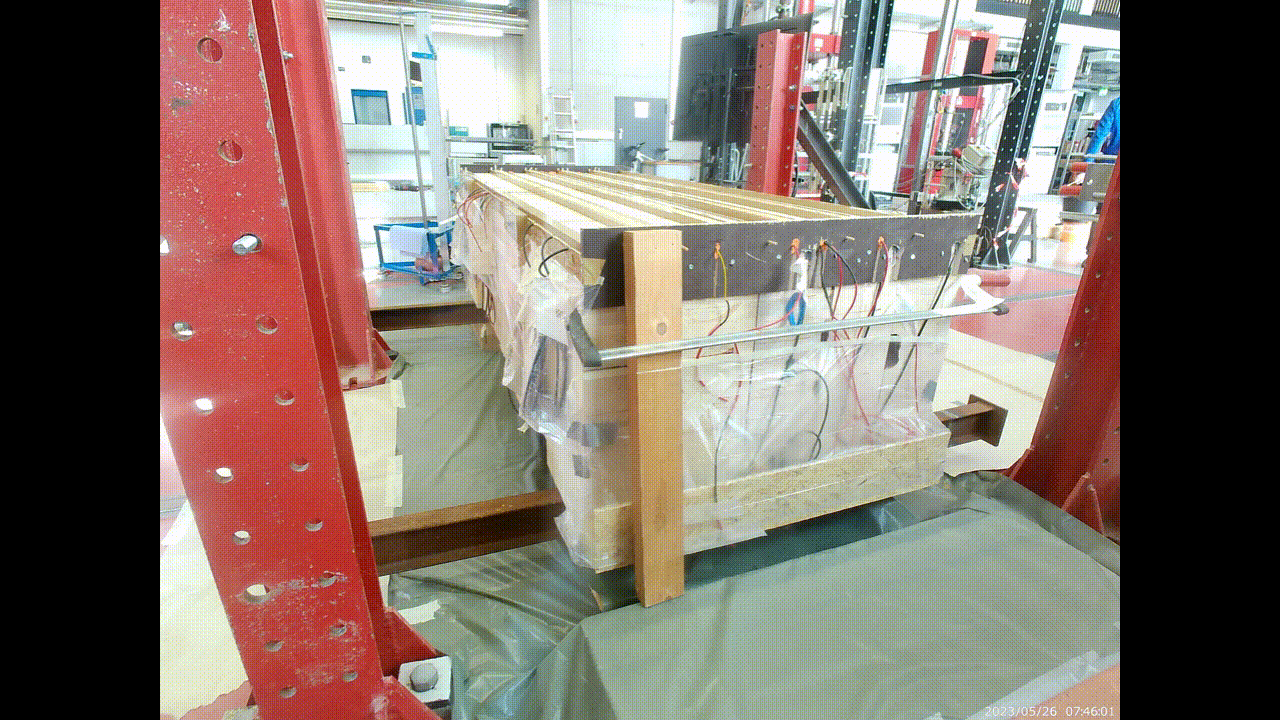
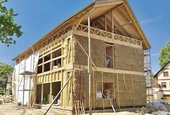
Projektart: Thüringer Ministerium für Wirtschaft, Wissenschaft und Digitale Gesellschaft (TMWWDG) / Europäische Union (EFRE) / Thüringer Aufbaubank / Förderdauer: 2024 - 2026
Weitere Informationen finden Sie hier.
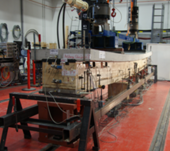
Projektart: Bundesministerium für Ernährung und Landwirtschaft (BMEL), Fachagentur Nachwachsende Rohstoffe e.V. im Förderprogramm "Nachwachsende Rohstoffe" / Förderdauer: 2022 - 2025
Weitere Informationen finden Sie hier.
Fritz, H.; Kraus, M. (2023) Statistical Evaluation of Geometric Variations of Italian Phyllostachys Edulis Bamboo. In: Proceedings of the 19th International Conference on Non-Conventional Materials and Technologies (IC-NOCMAT 2023, Brazil), pp. 323-331. (ISBN 978-65-272-0081-9)
Koch, J.; Ganß, M.; Kästner, M.; Simon, A. (2023) A promising approach of linear timber structural health monitoring. In: Nyrud, A. Q. and Malo, K. A. et al. (Hg.): Proceedings from the 13th World Conference on Timber Engineering (WCTE 2023, Oslo), pp. 3888-3895. (doi.org/10.52202/069179-0506)
Fritz, H.; Kraus, M. (2023) Influences of Geometrical Imperfections on the Buckling Behavior of Slender Bamboo Culms. In: Bio-Based Building Materials. Proceedings of the 5th International Conference on Bio-Based Building Materials (ICBBM 2023, Vienna), Springer Cham, pp. 859-869. (doi.org/10.1007/978-3-031-33465-8)
Kästner, M.; Rautenstrauch, K. (2021) Polymermörtel‐Klebverbindungen für Holz‐Beton‐Verbundbrücken: Teil 1: Schubtragverhalten neuartiger Verbundfugenkonfigurationen. In: Bautechnik (doi.org/10.1002/bate.202000096)
Kästner, M.; Rautenstrauch, K. (2021) Polymermörtel‐Klebverbindungen für Holz‐Beton‐Verbundbrücken: Teil 2: Biegetragverhalten, Bemessung und Ausführung. Bautechnik (doi.org/10.1002/bate.202000097)
Kästner, M. (2020) Zum Tragverhalten von Polymermörtel-Klebverbindungen für die Anwendung bei Straßenbrücken in Holz-Beton-Verbundbauweise. Dissertation, Schriftenreihe des Instituts für Konstruktiven Ingenieurbau, Bauhaus-Universitätsverlag. (ISBN 978-3-95773-285-9)
Kästner, M.; Rautenstrauch, K. (2016) Efficient shear transfer in timber concrete-composite bridges by means of grouting with polymer mortar. In: J. Eberhardsteiner, W. Winter, A. Fadai, M. Pöll (Hrsg.): Proceedings of the World Conference on Timber Engineering WCTE 2016, Vienna, Austria, 22.–25.08.2016. (ISBN: 978-3-903039-00-1)
Kästner, M. (2016) Effiziente Schubübertragung in HBV-Straßenbrücken durch Vergussklebung. In: U. Kuhlmann, J. Postupka (Hrsg.): Doktorandenkolloquium Holzbau Forschung und Praxis, Stuttgart, 01./02.03.2016.
Jahreis, M.; Hädicke, W.; Kästner, M.; Rautenstrauch, K. (2014) Timber-Concrete Composite Bridges with Reinforced Timber Beams and Stud Connectors. In: S. Franke, B. Franke, R. Widmann (Hrsg.): COST Timber Bridge Conference – CTB 2014, Biel, Switzerland, 25./26.09.2014. (ISBN 978-3-9523787-4-8)
Kästner, M.; Jahreis, M.; Hädicke, W.; Rautenstrauch, K. (2014) Development of continuous composite joints on the basis of polymer mortar with matched properties. In: A. Salenikovich (Hrsg.): Proceedings of the World Conference on Timber Engineering WCTE 2014, Quebec City, Canada, 10.–14.08.2014. (ISBN 978-0-86488-559-3)
Kästner, M. (2014) Hybride Hochleistungsträger aus Holz und Kunststoffen für die Anwendung in HBV-Konstruktionen. In: U. Kuhlmann, K. Stephan (Hrsg.): Doktorandenkolloquium Holzbau Forschung und Praxis, Stuttgart, 06./07.03.2014.
Rautenstrauch, K.; Kästner, M.; Jahreis, M.; Hädicke, W. (2013) Entwicklung eines Hochleistungsverbundträgersystems für den Ingenieurholzbau. Bautechnik 90, Heft 1, S. 18-25. (doi: 10.1002/bate.201200054)







